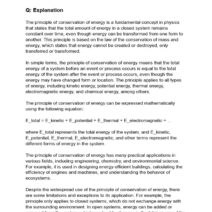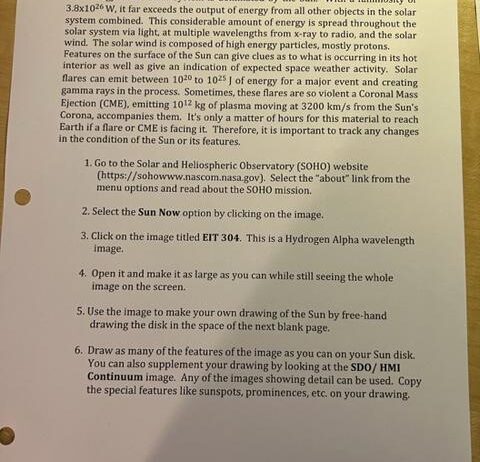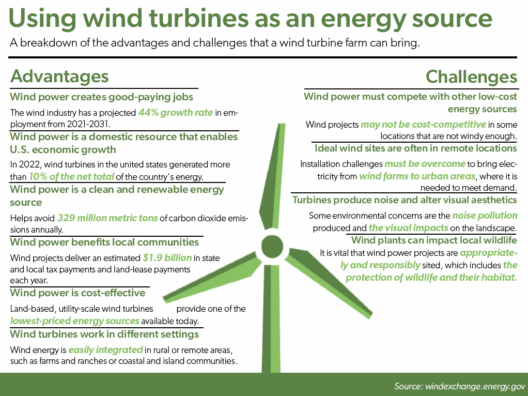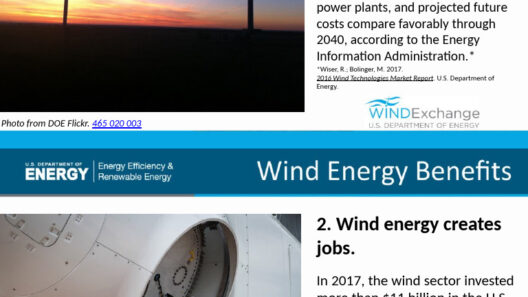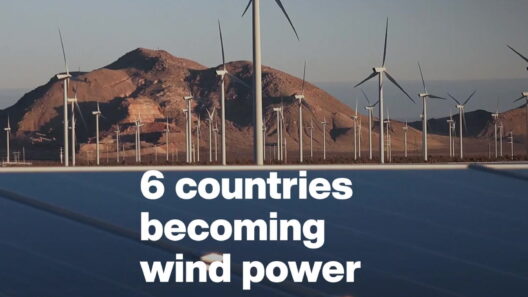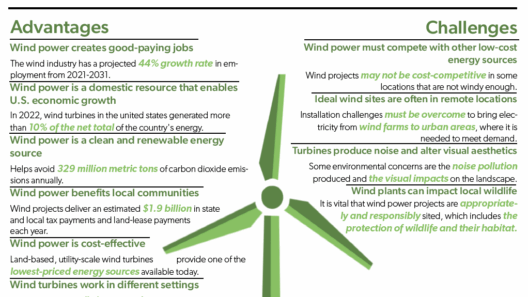When considering renewable energy sources, wind and solar power often emerge as leading contenders. Both harness natural phenomena, promising cleaner alternatives to fossil fuels. Surprisingly, an intricate relationship exists between these two formidable forces in the quest for sustainable energy. By delving into how wind energy correlates with solar power, we can broaden our understanding of renewable resources and appreciate the profound interconnectedness of our planet’s systems.
As sunlight strikes the Earth’s surface, it warms the land and oceans. This solar radiation initiates a complex interplay of atmospheric dynamics, ultimately giving rise to wind patterns. In this sense, the sun serves not merely as a luminous orb in the sky but as the primary engine driving wind energy. To comprehend the nuances behind this relationship, one must first explore how sunlight influences wind formation.
Solar Radiation and Atmospheric Dynamics
A foundational element in understanding wind energy lies in the concept of solar radiation. The Earth’s surface absorbs sunlight differently, based on materials and topographies. For example, darker surfaces, such as asphalt or forests, absorb more heat compared to lighter surfaces like deserts or snow. This differential heating leads to variations in air temperature, generating pressure disparities across regions.
Warm air, having a lower density, tends to rise, creating areas of low pressure. Conversely, cooler air, being denser, sinks, creating zones of high pressure. The atmosphere, ever eager to reach equilibrium, facilitates movement from areas of high pressure to low pressure. Thus, the sun’s rays directly instigate this airflow, laying the groundwork for wind generation.
Geographic Variability: Wind Patterns and Topography
Geographic features significantly impact how wind patterns develop. Mountain ranges, valleys, and bodies of water can all exert unique influences on local winds. For instance, mountains can create barriers that modify wind direction or speed, while regions near large water bodies experience more stable temperatures, leading to predictable wind patterns—ideal for harnessing wind energy.
Furthermore, the earth’s rotation introduces the Coriolis effect, curving wind trajectories and establishing distinct global wind belts. This complex interplay between the sun’s energy and the Earth’s geography demonstrates not only the profound influence of solar radiation but also establishes vital wind-energy-producing regions. Coastal areas, for instance, often experience stronger winds due to temperature differences between land and sea. Thus, understanding local geography and climate is crucial to optimizing wind energy systems.
The Synergy of Wind and Solar Energy
With a firm grasp of how wind is produced through solar energy, it becomes evident that these two forms of renewable power can coexist synergistically. Wind and solar projects can complement each other, particularly in regions where one resource may be less available at certain times. For instance, solar energy generation peaks during the day when the sun shines brightly, while wind energy often intensifies at night or during seasonal changes when the sun’s influence wanes.
This intrinsic variability presents opportunities for energy storage and grid management. By implementing hybrid systems that utilize both wind and solar technologies, energy providers can better balance supply and demand, mitigating the intermittent nature of each resource. Countries like Germany and Denmark have begun exploring these hybrid models, demonstrating how effectively wind and solar can underpin resilient energy infrastructure.
Environmental and Economic Implications
Beyond their technical interplay, the culmination of solar and wind energy holds compelling environmental and economic advantages. Harnessing these renewable resources can significantly reduce greenhouse gas emissions, foster job creation, and promote energy independence. Transitioning to wind and solar energy can alleviate reliance on fossil fuels, thus aiding in global carbon reduction efforts that are crucial for combating climate change.
Moreover, advancements in technology enhance the efficiency of both wind turbines and solar panels. As costs decline and efficiency improves, the integration of these forms of energy into grid systems becomes more financially viable. Regions with ample sunlight and wind resources are poised to capitalize on these advances, unlocking new economic opportunities while simultaneously addressing pressing environmental challenges.
Conclusion: A Shift in Perspective
Understanding the intricate relationship between wind and solar energy requires a holistic perspective—one that acknowledges the fundamental role of solar radiation in shaping our environmental dynamics. As countries around the world strive to achieve their sustainability goals, recognizing the powerful interdependence of wind and solar energy can inspire innovative solutions and strategic planning. Embracing this dynamic duo not only promises a diverse energy portfolio but propels society toward a more promising, sustainable future.
As engaged citizens and environmental activists, the imperative lies in advocating for policies that recognize and harness this synergy. Investing in dual renewable portfolios paves the way for resilience against climate fluctuations and energy demands. This not only nurtures our planet’s ecosystems but also propels economic growth and energy security, urging us all to embrace the sun’s role in generating wind and the necessity of both power sources in our pursuit of a sustainable future.

